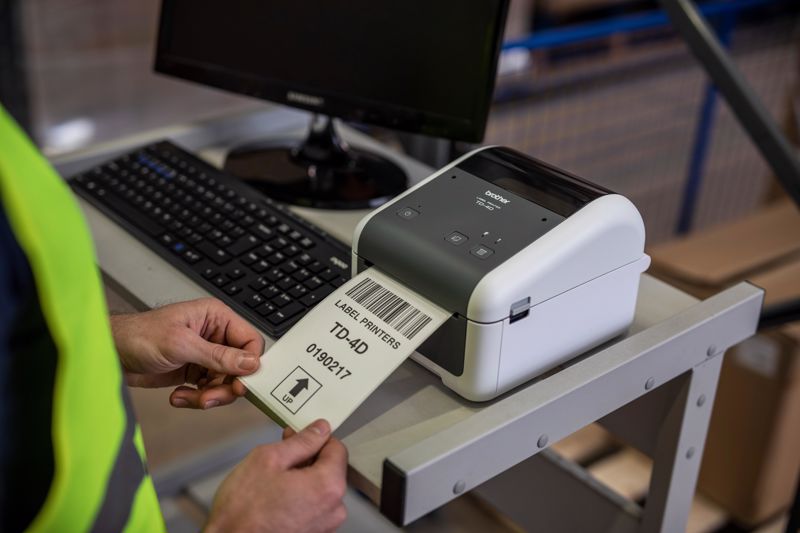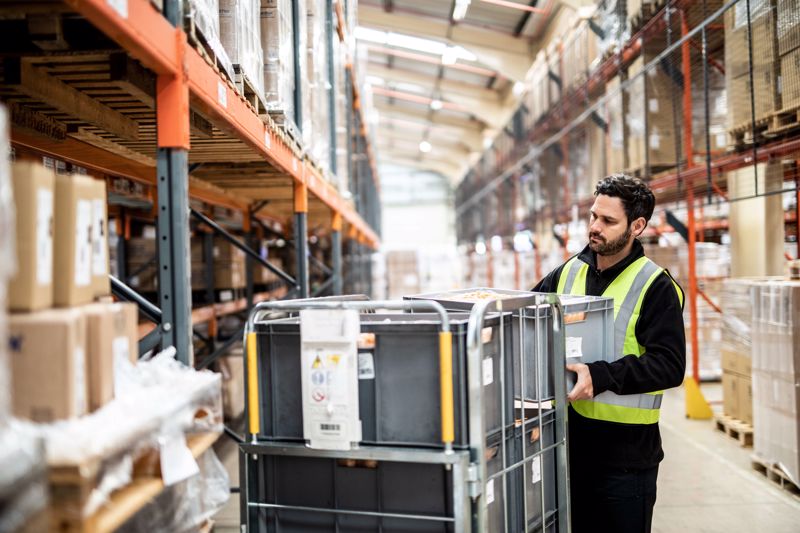The journey of an asset tag

From hospitals to hotels and even construction sites, asset tagging is essential for small and medium sized businesses to consider.
It may seem initially tedious but implementing a solid system for both cataloguing and tracking your office equipment, warehouse goods and equipment in the field can create considerable cost savings for your businesses. Tagging and monitoring company assets is useful for equipment that remains fixed, like large printers or fax machines, as well as items that move, like laptops or portable printers.
Knowing where your company’s assets are at all times, plus tracking when routine maintenance or replacement is due, can help you keep business projections realistic and plan for when it’s time to invest in maintenance or new equipment.

Why are we tagging our assets?
Launching a new asset management scheme requires a great deal of forethought. Considering all the options and coming to a company-wide agreement regarding the best fit for your business will make the creation, deployment and monitoring of asset tags far easier.
Asset tagging enables your business to catalogue and monitor its assets while gathering data for several purposes, says Robotics Tomorrow. Chief among them are:
- Real-time location
- Maintenance status
- Depreciation
- Use schedule
- Productivity
Tracking this information will result in several increased efficiencies as well as opportunities for cost savings. Accessing more data enables more considered resource allocation, prevents loss and allows for better organisation when collecting depreciation information for tax purposes.
But what if your organisation can’t afford an expensive software system needed to track and display all of these pieces of information? You’ll want to consider what data is most important to you and create your system to get that data; it can be as simple as deploying a few barcodes and tracking with an Excel spreadsheet.
When creating your asset tagging scheme, a checklist is a good way to consider which benefits of asset tracking are most relevant to your business. Consider:
- Which information is most relevant to track? It could range from expiry dates of your supplies or products to the location of company laptops
- Where will the gathered information be stored? Most organisations choose a software program designed for asset tagging. It can be hosted locally or in the cloud
- Will the assets move? If they will, perhaps handheld label printers or scanners are useful. Will your company be tracking the location of the assets at all times, or at certain key points?
- Will assets be indoors or outdoors? Weather conditions may necessitate waterproof tags
Whichever needs you determine to be most important, there is no need to rely on pen-and-paper asset tracking, thanks to the many types of modern asset tagging. Barcodes and QR codes are becoming ubiquitous around the world. Other tagging technologies are proliferating, too. There’s RFID, or radio frequency identification, as well as Bluetooth Low Energy (BLE) tags. Technologies like Ultra-Wideband (UWB) and low-power wide-area network (LPWAN) are also growing in use.
There are many considerations for businesses selecting an asset tagging technology. Among them:
- Battery: In addition to whether or not the technology requires a battery, the life of that battery type is also essential to know
- Lockdown: Tamper resistance is especially key for businesses concerned about theft with many assets in use in the field, like laptops or expensive cameras
- Durability: Factors like resistance and waterproofing of the tag are important to understand
- Plug-and-play: Ease of use is a major selling point for small businesses which need to be able to easily fly through the physical process of labelling and monitoring
- Costs: Besides the expense of the data management system, you’ll want to take into account the cost of labellers, tags and man hours to create the system

Inventory organisation
It’s easy to overlook the first step in your new system of asset tagging: the removal of any older tags or systems of identification. This step is key for preventing confusion.
Your process should involve the creation of a system to track and monitor the assets you’re tagging. To be able to reap the greatest benefits from your new system, create and use consistent taxonomies and color-coding where applicable. Consistency will be key as you enter basic information you plan to track about the item. This may include date of purchase, location, current condition and value. Dates of service and expiry should be included if relevant.
Many organisations use two factors of authentication – such as barcodes plus RFID, or barcodes and labels — to track assets. This is worth consideration for the different benefits offered by various types of tracking.
Finally, be sure to factor time for annual inventory reconciliation processes into your asset tagging strategy.
Label printers for asset management
Mobile solutions, many of them hand-held label printers, can be essential tools for asset management. Portable machines able to print barcodes and text on the same labels can be useful in large spaces like supermarkets, factories, laboratories and other high-end commercial spaces. When label makers are easy to hold, can print various sizes of labels and are secure, employees can focus on their work, unburdened from stressful technology. Having the right tools literally in hand cuts down on human errors.
If your business is concerned about fading or smudging of your labels and barcodes, know that products like our P-touch TZe laminated labelling tapes are waterproof and able to withstand extreme heat or cold. The tape is fade resistant and has great longevity, making these labels appropriate to affix to equipment stored in various temperatures.
Choosing best-fit tools should include software considerations. Ideally, your asset tagging solutions can be easily integrated into your printing operations with either bespoke or out-of-the-box standard software integration solutions.
We know there are many factors to consider when deciding how your organisation will monitor its equipment and products. Please contact us to discuss how Brother label printers and labelling tapes can help your business realise the many benefits of asset tagging.

Resource Library
Be the first to receive exclusive offers and the latest news on our products and services directly in your inbox




